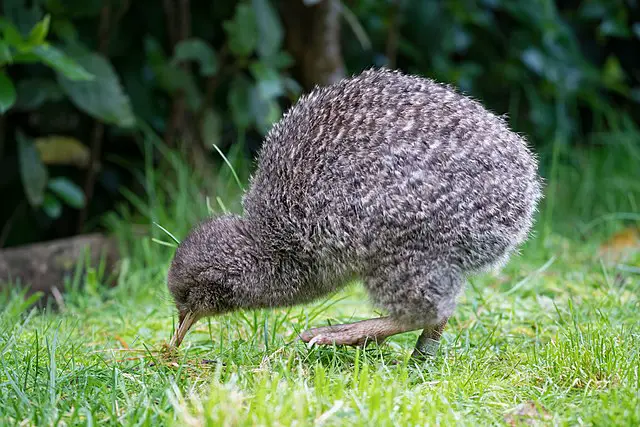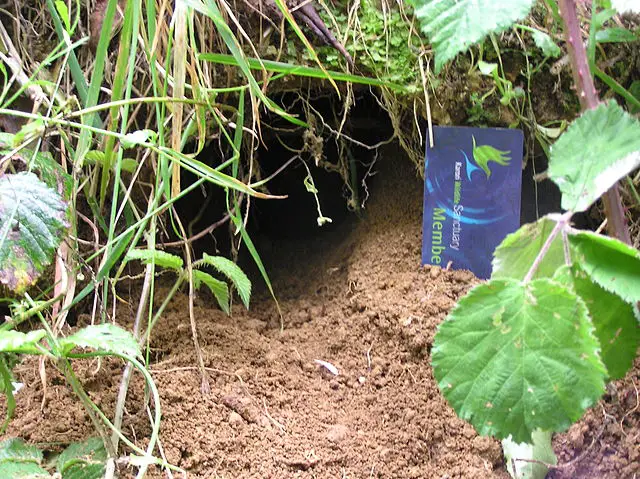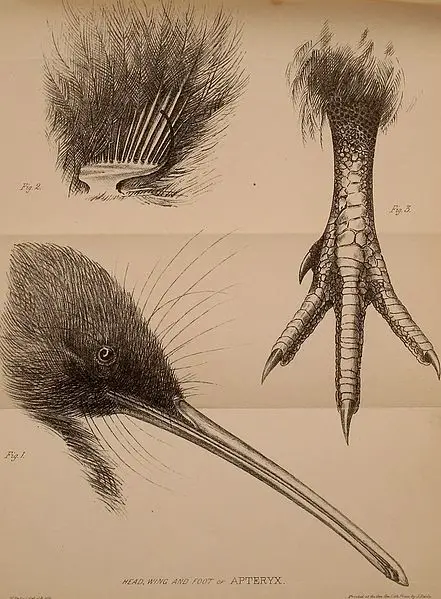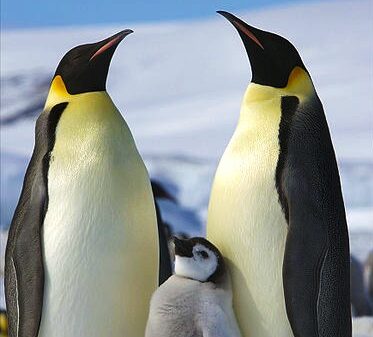Kiwi Bird is the national bird of New Zealand. It is a flightless bird that is only found in New Zealand. It has a unique appearance which makes is it very intriguing. We have gathered a complete set of Kiwi Bird Facts For Kids that will help you in learning All About Kiwi Birds. You are going to learn about is the scientific name, classification, species, evolution, appearance, physical features, physical abilities, diet, diet, habitat, lifespan, life cycle, reproduction, eggs, baby, male vs female, behavior, adaptations, food chain, importance, population, endangerment, predators, fun facts and answers to some frequently asked questions about Kiwi Birds.
Kiwi Bird Facts For Kids
What is Kiwi Bird
- Kiwi bird is any of the five small flightless bird species endemic to New Zealand.
- They belong to the genus Apteryx.
- Kiwi birds are relatives of Ratite (ostriches, cassowaries, emus, rheas), which are flightless birds of large size.
- Kiwis have the size of a domestic chicken and are the smallest ratite.
- Kiwi birds are well-known for their unique features, such as having nostrils at the tip of their long beak, hair-like feathers, tough skin, and heavy bones.
- Four kiwi bird species are Vulnerable on the IUCN Red List, while one is Near Threatened.
- Kiwi bird is an icon of New Zealand, and New Zealanders are also worldwide known as Kiwis or Kiwi people.

Scientific Name of Kiwi Bird
- The following are the scientific names of the five kiwi bird species:
- Apteryx haastii (great spotted kiwi or Roroa)
- Apteryx owenii (little spotted kiwi)
- Apteryx rowi (Okarito kiwi or the rowi)
- Apteryx australis (southern brown kiwi, Tokeoka, or common kiwi)
- Apteryx mantelli (North Island brown kiwi)
Scientific Classification of Kiwi Bird
- The following is the scientific classification or taxonomy of kiwi birds:
| Kingdom | Animalia |
| Phylum | Chordata |
| Sub-phylum | Vertebrata |
| Class | Aves |
| Clade | Novaeratitae |
| Order | Apterygiformes |
| Family | Apterygidae |
| Genus | Apteryx |
| Species | Apteryx haastii
Apteryx owenii Apteryx rowi Apteryx australis Apteryx mantelli |
Kiwi Bird Species
- There are five kiwi bird species:
-
- Great spotted kiwi or Roroa (Apteryx haastii) is the largest kiwi bird species that is distributed in New Zealand.
- Little spotted kiwi (Apteryx owenii) is the smallest kiwi species distributed on Kapiti Island.
- Okarito kiwi or the rowi (Apteryx rowi) is a slightly smaller species distributed in the South Island of New Zealand. It was first identified as a new species of kiwi bird in 1994.
- Southern brown kiwi, Tokeoka, or common kiwi (Apteryx australis) is a common species of kiwi. It is also distributed on the South Island of New Zealand.
- North Island brown kiwi (Apteryx mantelli) is the most common species of kiwi birds. It is distributed on the North Island of New Zealand.
Evolution of Kiwi Bird
- The kiwi bird is believed to be the most ancient bird of the world that evolved over 30 million years ago.
- It is a member of the Ratite family, which also includes ostriches, cassowaries, emus, rheas, as well as the elephant bird of Madagascar and the extinct moa of New Zealand.
- Scientists once believed that kiwi was closely related to moa and both evolved from a common ancestor after the separation of Newzealand and Gondwana.
- However, a recent DNA study identified that kiwi and elephant birds are the closest relatives (sister taxon).
- The study also revealed that kiwi is more closely related to cassowaries and emus rather than moa.
- Additionally, DNA studies also reveal that moa is much older than kiwi in terms of evolution, and moa is the closest relative of the South American tinamous.
What Does Kiwi Bird Look Like
-
Appearance
-
- In appearance, kiwi birds are quite different from other birds.
- Their size is about equal to that of domestic chickens.
- All species have a pear-shaped body with a small head and a long flexible beak.
- Unlike other birds, their nostrils are located at the tip of their elongated beak.
- They have very small eyes relative to their body size.
- They are odd-looking birds with only about 3 cm (1 inch) long wings that are vestigial, useless, and hidden under the feathers. All species have 13 flight feathers.
- The tips of their wings have cat-like claws, which are nonfunctional.
- Kiwi birds have long and loose feathers that look much like hairs.
- On their face and around the base of their bills, they have modified feathers that act like whiskers.
- Like other ratites, kiwi birds also do not have a keel on the sternum.
- They do not have tails, however, they have very strong and muscular legs.
- Unlike other ratites (which have 3 toes), each foot of kiwi birds has four toes.

-
Color
-
- Great spotted kiwi bird species have grey-brown color plumage with lighter bands.
- Little spotted kiwi bird species have pale-mottled grey color plumage with fine white mottlings or spots.
- The Okarito kiwi bird species have a greyish shade of plumage with sometimes white facial feathers.
- The southern brown kiwi bird species (or Tokoeka) have lighter grey-brown plumage with bands of light color.
- The North Island brown kiwi bird species have streaky red-brown color plumage.
Physical Features
- The physical features of all the kiwi birds species are shown in the following table:
| S.No | Species | Height | Length | Weight |
| 1 | Great spotted kiwi bird | 18 inches (45 cm) of males
20 inches (50 cm) for females |
17.7 to 21.6 inches (45 to 55 cm) | 2.4 kg (5.3 Ibs) of males
3.3 kg (7.3 Ibs) of females |
| 2 | Little spotted kiwi bird | 9.8 inches (25 cm) | 14 to 18 inches (35 to 45 cm) | 0.88 to 1.36 kg (1.9 to 3.0 Ibs) of males
1 to 1.59 kg (2.2 to 3.5 Ibs) of females |
| 3 | The Okarito kiwi bird | 14 to 16 inches (35 to 40 cm) | 18 to 21 inches (45 to 54 cm) | 2.2 to 2.8 kg(4.9 to 6.2 Ibs) |
| 4 | The southern brown kiwi bird | 16 to 18 inches (40 to 45 cm) | 17 to 21 inches (43 to 53 cm) | 1.6 to 2.8 kg (3.5 to 6.2 Ibs) of males
2.1 to 3.9 kg (4.6 to 8.6 Ibs) for females |
| 5 | The North Island brown kiwi bird | 16 inches (40 cm) | 18 to 21 inches (45 to 54 cm) | About 2.2 kg (4.9 lbs) for males
About 2.8 kg (6.2 lbs) for females |
Physical Abilities
-
Speed
-
- Kiwi birds can run at a speed of about 19 km/h (12 mph).
-
Jump
-
- Kiwi birds can jump. But the height and distance of their jumping are unknown.
-
Climb
-
- Kiwi birds are excellent climbers and use their sharp claws to climb trees.
-
Swim
-
- Kiwi birds can swim but their swimming speed is unknown.
What do Kiwi Birds Eat – Kiwi Bird Diet
- In wild
-
- Kiwi birds are carnivores in nature and mostly eat small invertebrates.
- In the wild, their diet is mostly composed of worms, bugs, beetles, larvae, and other small invertebrates.
- They also eat berries and seeds.
- Their foraging time is from dusk to dawn.
- They are ground dwellers and dig the ground to find prey.
- They use their highly developed sense of smell to find food.
- Kiwi birds enter their long beak in the ground to smell and sniff the prey, as their nostrils exist at the tip of their beaks.
- They use their muscular feet to kick off rotting logs and to find food.
- When they find food, they use their beak to beat and kill the prey before eating.
- In captivity
-
- In captivity, kiwi birds are fed with 100 to 200 g of an artificial captive diet every night.
- Native earthworms are offered to encourage their probing behavior.
- Other commercially available insects are also offered, such as wax-moth larvae and mealworms.
-
List of food items
-
- The favorite food items of kiwi birds are:
- Native worms that can grow more than 0.5 meters (there are about 178 native and 14 exotic species of worms in kiwi bird’s habitat)
- Bugs
- Beetles
- Larvae
- Cicadas
- Moths
- Barries
- Seeds
- The favorite food items of kiwi birds are:
-
What do baby Kiwi eat
-
- For the first few days of its life, a baby kiwi bird gets nourishment from a large yolk reserve in its abdomen.
- It also eats small twigs and pebbles that become stored in its gizzard and help indigestion.
- After a few days of its hatching, it then leaves the burrow and starts joining its mother or father to search for food.
Where do Kiwis Live – Kiwi Bird Habitat
-
Natural Habitat
-
- The natural habitat of kiwi birds in the forested regions of New Zealand.
- They are adaptable to live in a wide range of habitats including plantation forests, rough farmlands, snowy tussocks, dunes, and mangroves.
- Regions with pockets of wetland vegetations and stands of trees running down to the river are their favorite places to live in.
- As kiwis are flightless birds, they make a home in burrows they dig in their swampy forest or grassland habitat.
- Kiwi birds have their territories, which they mark by leaving smelly droppings. They are very protective of their territories and patrol each night.
- They dig many burrows in their territories.
- Nesting barrows may be dwelled early in the season to become covered with plants at the entrance. It provides excellent camouflage at the time of females laying their eggs.

-
Biome
-
- The normal biome of kiwi birds is the local woodlands that are today the spots covered with coniferous and kauri copal with shrub ferns covering the undergrowth.
- Their other biomes are the temperate rainforests, subtropical forests, grasslands, and shrublands of New Zealand.
-
Range
-
- The habitat range of great spotted kiwi in New Zealand is the more mountainous parts of northwest Nelson, the Southern Alps, and the northern West Coast.
- Little spotted kiwi bird species are currently found on only Kapiti Island. The species has been reintroduced to other islands that are free from predators.
- The range of Okarito kiwi bird species is limited to a small region on the west coast of the South Island.
- Southern brown kiwi or Tokoeka are distributed in the South Island and Stewart Island. On the South Island, they live in the Westland and Fiordland.
- The habitat range of the North Island brown kiwi bird species is throughout the North Island.

-
Countries
-
- Kiwi birds are native to New Zealand and found nowhere else in the world.
How Long Do Kiwis Live – Kiwi Lifespan
-
In Wild
-
- The lifespan of great spotted kiwi birds in the wild is about 20 years.
- The estimated lifespan of little spotted kiwi birds in the wild is 30 years.
- The Oktario kiwi lives for about 50 years in the wild.
- Southern brown kiwi lives for approximately 20 years in the wild.
- The lifespan of the North Island brown kiwi bird in the wild is expected to be 20 years after they survive till their first birthday.
-
In Captivity
-
- The great spotted kiwi birds live for 12 to 18 years in captivity. The range of their maximum lifespan is from 28 to 33 years.
- Little spotted kiwi birds live for about 30 years in captivity.
- The Oktario kiwi lives for about 30 years in the wild. Some sources say that they may live for about 100 years.
- Southern brown kiwi lives for about 30 years in captivity.
- The North Island brown kiwi birds live for about 30 years in captivity. However, some individuals also lived for up to 40 years.
Kiwi Bird Life Cycle
- The lifecycle of a kiwi bird starts when it hatches from the egg after the incubation of 75 to 85 days.
- In most species, male chicks sexually mature at the age of about 18 months while the females start laying eggs at the age of about 3 years.
- After attaining sexual maturity, they search for mates for themselves and start reproducing.
- According to the San Diego Zoo, the lifespan of kiwi birds in the wild is up to 50 years, while they live for up to 30 years in captivity.
Kiwi Reproduction
- Kiwi birds lay eggs like other bird species.
- The mating pair typically tend to live together for their whole life. However, research in the wild revealed that in regions where kiwis were abundant, the separation rate was very high and the birds were found changing mates after every two years.
- Their breeding season is from late winter to early summer.
- Males dig underground burrows for nests or they may be made in hollow logs.
- Female kiwi birds lay a clutch of eggs. A clutch may have 1 to 6 eggs depending on the species. Females lay up to 3 clutches of eggs per year.
- After the eggs are laid, the male takes over his parenting duty and incubates eggs for 75 to 85 days. In great spotted kiwi, both the partners cooperatively incubate the eggs. While in the other four species, only male partners are responsible for the incubation of eggs.
- Sometimes, the incubation period becomes longer to about 92 days.
- Kiwi eggs do not have any egg teeth, so the chick must kick to make its way out of the shell.
Kiwi Bird Eggs
- A kiwi egg is smooth and has white, off-white, or pale green color.
- Their eggs are huge. A single kiwi egg makes up to 20% of the female’s whole body weight.
- A single egg may weigh as much as 450g (1 pound).
- The kiwi egg contains about twice as much yolk as most birds of its size.
- While its egg is almost 6 times bigger than the egg of any other bird of its size.
- A female kiwi lays about 100 eggs in her entire life.

Kiwi Baby
- A baby kiwi bird is known as a chick.
- It hatches after the incubation of the egg for about 75 to 85 days.
- At hatch, a chick weighs from 255 to 300 grams (9 to 9.5 ounces).
- It hatches fully developed and has the same appearance as its parents.
- It has shaggy adult feathers, a long beak, and muscular legs.
- For the first few days of life, a chick stays in the nest and takes nourishment from a large yolk reserve in its belly.
- After a few days, the chick then leaves the nest and joins its father to start searching for food.
- A chick will stay for about 20 days with its father. It will then remain near the territory of adults for months or even years.
- The mortality rate of kiwi bird chicks is extremely high, which is about 95%. Only a few chicks survive till their first birthday.
- Male chicks attain sexual maturity at the age of about 1.5 years while females start laying eggs at the age of about 3 years.
Kiwi Male vs Female
- Male and female kiwi birds have the same appearance.
- Female kiwi birds have larger body sizes and weights than males because they are responsible for laying such huge eggs relative to their bodies.
- Male kiwi birds are responsible for the incubation of eggs. During that duration, they lose a lot of their body weight.
Behavior of Kiwi Birds
- Kiwi birds are nocturnal and remain active from dusk to dawn. To make sure that the surrounding is safe, they move out their head from burrows and sniff the air with their beaks. They are also observed tipping their head towards a sound to hear more clearly.
- Kiwi birds dig burrows in the ground or in the rotten logs where they live.
- Kiwis have their territories. They mark the boundaries of their territories with smelly droppings to keep other kiwis away. They are very protective of their territories and patrol their region every night.
- Kiwi birds communicate by making a variety of sounds. To monitor each other in the dark, kiwis make loud shrieks, which are half whistle half scream that serves to stay others away. This sounds like ‘kee-wee kee-wee’. When angry, kiwis hiss, grunts, and snorts.
- Male kiwi birds are responsible for the incubation of eggs in most species (only in great spotted kiwi do both the partners incubate eggs). This behavior is very important, as the female loses a lot of energy after laying huge-sized eggs and she could not afford incubation, which is a process that also requires a lot of energy.
- A kiwi pair make gentle grunts and snuffles when together and with their chicks.
- Kiwi pairs also fight. If a female is not in the mood for his partner’s company, she may kick him away.
- It was believed that kiwi birds are monogamous and mate for life. However, research in the wild found that the separation rate of pairs was very high, especially in the regions where kiwis were abundant.
Kiwi Adaptations
Physical OR Structural Adaptations
- The following are some of the major structural or physical adaptations of kiwi birds.
-
Plumage Color
-
- Kiwi birds have greyish or brownish color feathers that also have bands or strips.
- It blends in with the surroundings and provides them camouflage.
-
Hair-like Feathers
-
- Kiwi birds have shaggy hair-like feathers that lack barbules.
- As kiwi birds are ground-dwelling birds, hair-like feathers provide insulation against cold and moisture.
- It allows them to easily forage on the coldest nights and also protects them from any moisture and dampness that may penetrate their burrows.
-
Long Beak and Nostrils
-
- Kiwi birds have a long beak and nostrils at the tip of their beak.
- It allows them to detect and find hidden prey by probing their long beaks in the swampy ground.
-
Whiskers Around the Beak
-
- Unlike other bird species, kiwi birds have whiskers around their beaks.
- Whiskers are an important adaptation, as kiwis are nocturnal and it helps them to navigate during the night.
-
Strong and Muscular Legs
-
- Kiwi birds have extremely strong and muscular legs, which make up about one-third of their total body weight.
- Strong legs are an important adaptation as kiwi birds are flightless and depend on their legs for movement and defense.
- Their strong legs allow them to run at a speed of about 19 km/h.
-
Strong and Sharp Claws
-
- Each foot of a kiwi bird has four toes, which are equipped with sharp claws.
- They use their feet and claws to dig burrows and to kick apart rotten logs to find prey.

Physiological Adaptations
The following are some of the physiological adaptations of kiwi birds:
-
Keen Senses of Smell And Hearing
-
- Kiwi birds have keen senses of smell and hearing. It allows them to find food and detect predators.
-
Wide Gape or Mouth Opening
-
- Kiwi birds have the widest mouth opening or gape, which makes them able to swallow and digest large-sized prey and fruits.
-
Antifungal And Antibacterial Properties of Yolk
-
- The egg yolk of kiwi birds has natural antifungal and antibacterial properties.
- It is an important adaptation because their underground moist burrows are fertile breeding sites of fungi and bacteria.
Kiwi Food Chain
- Sun is the overall source of energy in this food chain.
- Plants are the producers, which take energy from the sun and prepare food for themselves.
- In the food chain, kiwi birds are categorized as both primary consumers and secondary consumers. Because they eat producers (berries, fruits, and seeds) as well as the primary consumers (larvae, worms, and other insects).
- Tertiary consumers are the predators of kiwi birds, which are dogs, cats, possum, and ferrets, which prey on kiwis and their eggs.
Why Are Kiwis Important – Ecological Role of Kiwi
- Kiwi birds play a major ecological role.
- They eat larvae, worms, and other insects that are pests for plants.
- They also eat fruits and may disperse their seeds.
How Many Kiwis Are There In The World- Kiwi Population
- The estimated population of great spotted kiwi birds is over 20,000 individuals.
- The population of little spotted kiwis was estimated as more than 1,600 individuals in 2012.
- The estimated population of the Okarito kiwi bird species is only about 600 individuals.
- The population of southern brown kiwi is estimated at 7,000 individuals.
- The population of North Island brown kiwi birds was calculated as about 8,000 individuals in 2008.
Are Kiwis Endangered – Why Are Kiwis Endangered
Yes, Kiwis are endangered.
Reasons
-
- Before the human settlement in New Zealand, kiwi birds had no natural mammal predators. That is why they did not evolve any anti-mammal predatory response.
- When humans settled in New Zealand, they brought dogs, cats, pigs, and so many other animals to the region that caused a serious threat to the survival of kiwi birds.
- Stoats are especially a big threat for the kiwi chicks and are responsible for the death of about half of the kiwi chicks in many regions of New Zealand. Cats also hunt kiwi chicks but not to the extent of stoats.
- While dogs are the biggest predators of adult kiwis. They can easily track kiwis with their strong and distinctive scent and can catch and kill them in seconds.
- These predators caused an abrupt decline in the population of kiwi birds.
- Another major threat to the survival of kiwis is the destruction of their habitat and other human activities, such as roads or motor vehicles crossing their habitat is also a serious threat.
Conservation status
-
- The conservation status of four kiwi bird species (Great spotted kiwi, Okarito kiwi, Southern brown kiwi, and North Island brown kiwi) is Vulnerable on the IUCN Red List.
- While the conservation status of one species (Little spotted kiwi) is Near Threatened on the IUCN Red List.

Kiwi Predators
- The following are the major predators of kiwi birds:
- Dogs
- Stoats
- Cats
- Ferrets
- Wekas (they eat kiwi eggs)
Fun Facts About Kiwis
- Kiwis are flightless birds native to New Zealand and found nowhere else on the earth.
- Kiwis are the only birds in the world that have nostrils at the tip of their beaks.
- The feathers of kiwi birds are like hairs and do not resemble the feathers of other birds.
- Unlike other birds, kiwis have tough and thick skin. They also have heavy bones filled with marrow.
- A single egg of kiwi birds makes about 20% of the female’s whole body weight. In proportion, it is the largest of any bird species in the world.
- Kiwi birds have nonfunctional vestigial wings that have cat-like claws at the tips.
- The body temperature of kiwi birds is up to 38 ℃ (100 ℉), which is relatively low than the body temperature of other birds and is much like mammals.
- Genetic studies revealed that the extinct elephant bird of Madagascar is a close relative of kiwi birds.
- Kiwi birds make a shrieky sound “Kee-Wee” due to which the bird got its name.
- Kiwi bird is one of the national symbols of New Zealand. The term Kiwi is also internationally used by New Zealanders as an informal demonym.
Frequently Asked Questions About Kiwi:
Is A Kiwi A Mammal
- No, the kiwi is not a mammal. It is a bird.
- However, most of its features resemble mammals rather than birds, such as hair-like feathers, tough and thick skin, heavy bones filled with marrow, and relatively low body temperature that is 38 ℃ (100 ℉).
Why Is The Kiwi Bird Called Kiwi
- The name Kiwi was given to the kiwi bird because of its loud shriek sound “Kee-Wee Kee-Wee”.
Why Are New Zealanders Called Kiwis
- The name kiwi was generally used for the soldiers of New Zealand during the First World War. In England, a giant kiwi was carved on the chalk hill above the World War Ⅰ camp occupied by the New Zealand soldiers (the Sling Camp).
- Usage of the name Kiwi has become so widespread that all people of New Zealand (at home and overseas) are now commonly called Kiwis.
Are Kiwis Blind
- No, kiwi birds are not blind, however, they have very poor vision.
Are Kiwi Birds Dangerous
- No, kiwi birds are not dangerous.
- However, they may be aggressive if provoked and will use their sharp claws as a weapon if they feel threatened about their chicks or eggs.
What Eats Kiwi Birds
- Dogs and stoats mainly eat adult kiwis and their chicks.
- Other animals that eat kiwi birds are cats, ferrets, rats, and weasels.
Can I Have A Kiwi Bird As A Pet
- No, kiwi birds can not be kept as a pet.
- Because they are nocturnal, territorial, and somewhat aggressive.
Why Are Kiwi Eggs So Big
- The exact reason why kiwi eggs are so big is unknown.
- However, the probable reasons are:
- The abundance of food, which provides a lot of raw materials for the production of egg
- The loss of flight, which eliminate the weight limit on the egg
- Absence of predatory pressure, as kiwi birds had historically no native New Zealand predators.












This is so helpful!!!!!!! I have a huge project due in April that I have to work on every day, and this has been a life saver! Thank you for creating this. It has made my work a lot easier. Almost everything I need is in one place (75% of it). I will cite my resources, and the information you’ve given me will help me get the A+ I hope to receive! Thank you again!!!